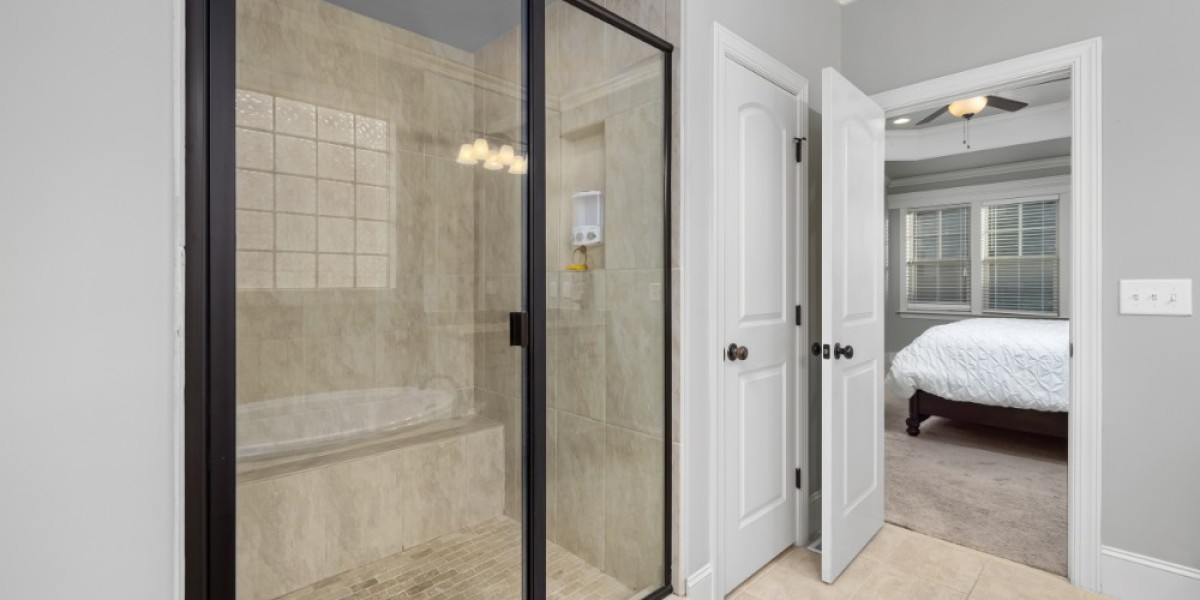Installing a shower door is a smart way to enhance your bathroom’s aesthetics, improve functionality, and eliminate messy water spills. Whether you're upgrading from a shower curtain or replacing an old door, proper installation ensures durability and performance. This guide will walk you through everything you need to know about shower door installation from preparation to final touches.
1. Understanding the Types of Shower Doors
Before diving into installation, it’s crucial to understand the different types of shower doors available:
Frameless Shower Doors
Made from thick, tempered glass.
Minimal hardware, offering a sleek, modern look.
Requires precise installation for proper sealing.
Framed Shower Doors
Have a metal frame around the entire structure.
Generally more affordable and easier to install.
Available in sliding, pivot, or hinged styles.
Sliding Shower Doors
Ideal for smaller bathrooms.
Consist of two or more glass panels that slide past one another.
Hinged and Pivot Shower Doors
Swing open like a regular door.
Require more space but offer a wider entryway.
2. Tools and Materials Needed
To install a shower door, gather the following tools and materials:
Tools:
Drill with bits
Tape measure
Level
Screwdriver
Caulking gun
Utility knife
Safety glasses
Materials:
Shower door kit
Screws and anchors
Silicone caulk
Shims
Masking tape
3. Preparing the Shower Area
Measure Carefully
Measure the width at the top, middle, and bottom of the shower opening.
Measure the height from the base to the top edge.
Double-check for plumb walls and level surfaces.
Clean the Area
Remove any old caulk or residue.
Clean and dry the surfaces where the frame or door will attach.
4. Step-by-Step Installation Process
Step 1: Mark the Mounting Points
Use a pencil and level to mark where the door tracks or hinges will be installed.
Ensure all marks are straight and symmetrical.
Step 2: Install the Bottom Track (For Sliding Doors)
Position the bottom track in place and use masking tape to hold it.
Drill pilot holes if necessary and secure the track with screws.
Step 3: Attach the Side Rails or Hinges
Align the side rails (for framed or sliding doors) or hinges (for frameless).
Secure them using screws and anchors appropriate for your wall type (tile, drywall, etc.).
Step 4: Install the Glass Panels
Carefully lift and position the glass panels into place.
For sliding doors, insert rollers into the top track and adjust for smooth movement.
For hinged doors, attach the door to the hinges and test the swing.
Step 5: Seal the Edges
Apply a thin bead of silicone caulk along all seams and joints.
Use a caulk smoothing tool or wet finger to smooth it out.
Avoid using the shower for at least 24 hours to allow the caulk to cure.
5. Common Installation Mistakes to Avoid
Incorrect Measurements: Always measure more than once to avoid size mismatches.
Skipping the Level: Uneven tracks can cause leaks or poor door alignment.
Insufficient Sealing: Poor caulking can lead to water damage and mold growth.
Using Wrong Tools: Inappropriate hardware can damage your tiles or not hold securely.
6. Tips for a Professional Finish
Use clear silicone for a clean look.
Match hardware finishes with other bathroom fixtures.
Consider anti-lime coatings for easier maintenance on glass.
If unsure, consult or hire a professional installer.
7. Maintenance After Installation
Clean the glass regularly with non-abrasive cleaners.
Inspect caulk lines periodically for wear or mildew.
Tighten any loose screws or hardware over time.
Lubricate sliding mechanisms annually if needed.
Conclusion
Installing a shower door can seem like a daunting task, but with the right preparation, tools, and attention to detail, it's a manageable DIY project for most homeowners. Not only does it improve your bathroom’s appearance, but it also boosts functionality and hygiene. Whether you opt for a sleek frameless design or a sturdy framed option, following this guide will help you achieve a professional-looking installation that lasts for years. If you’re ever in doubt, don’t hesitate to call in an expert to ensure the job is done right.








